5 SPA design mistakes
Are you thinking of refurbishing your spa? Beverley Bayes, creative director of Sparcstudio, tells Amanda Pauley the five costly design mistakes to avoid and the key elements to factor in
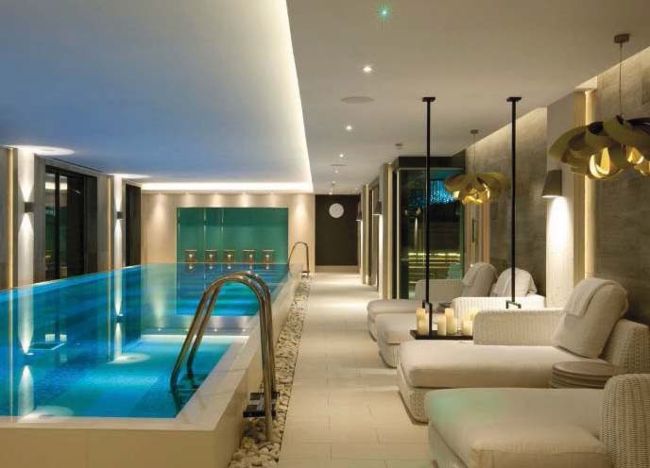
Dormy House infinity pool
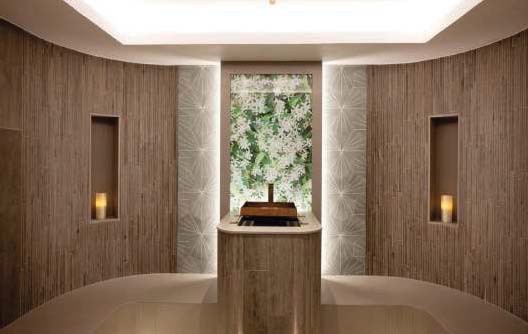
The sauna and steam room at The Spa at South Lodge.
All images: Sparcstudio Design
1 Not making the most of your location
Beverley Bayes, creative director of Sparcstudio, which has worked on major projects including Dormy House Spa and The Spa at South Lodge, says to create a spa that’s truly unique you need to focus on your location. “A connection to the landscape is crucial, whether your spa is in a country or urban setting,” she says. “I love city spas that have a link to the outside, like with a rooftop pool. It’s about getting out there and not being hermetically sealed.”
A sense of heritage is also key. “The owners of Dormy House Spa in Worcestershire are Danish, so there’s a Scandinaviameets- the-Cotswolds influence throughout the spa, using natural materials and stone. This USP comes across in the palette to create something unique,” explains Bayes.
2 Overcomplicating the client journey
Space planning is fundamental to any spa design and the focus should be on “building a sense of anticipation for the client in an intuitive, flowing journey”, says Bayes. “It’s amazing how many beautiful spas have a journey that’s just completely illogical.”
Avoid the “schoolboy error” of wet and dry crossover areas, says Bayes, because “you’ll have clients arriving in their coats and walking through areas where people are in their spa robes and slippers”; take every opportunity to create special relaxation spots, such as a window seat where clients can snuggle in with a book; and be economic with corridor space because “you don’t want to spend lots of money heating and lighting big areas that don’t add anything to the experience,” she adds.
The layout should also work towards a big reveal, “so, throughout the journey, give clients glimpses into an area before opening them up to what I call the ‘money shot’,” adds Bayes. At The Spa at South Lodge in Horsham, clients walk down the stairs to the basement and along a corridor with slit windows before being brought into the infinity-edge pool area, which has glass walls that bring the countryside landscape inside. “It’s brilliantly lit and very atmospheric, which makes it a ‘wow’ ending,” she says.
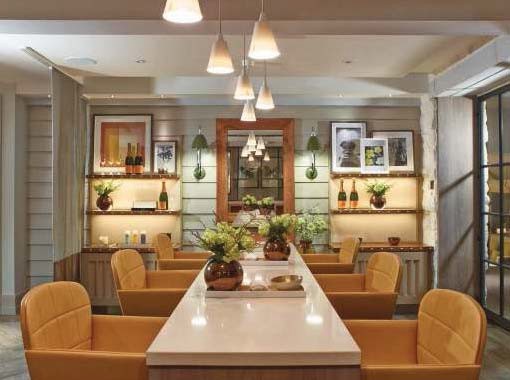
Dormy House Spa
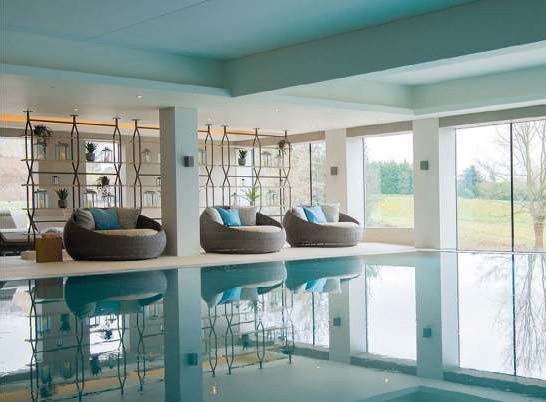
The Spa at South Lodge’s pool
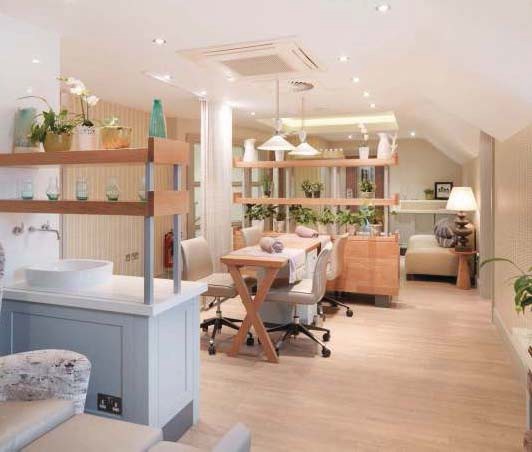
Dormy’s nail bar
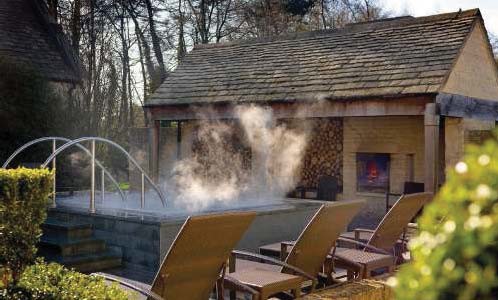
Calcot Manor’s spa garden
3 Focusing on style over substance
A beautiful design is pointless if the practicalities of running the spa operation aren’t built into it. “In terms of service routes, I’ve heard of spas where the only way to get towels in and out of key spaces is to trundle them across relaxation rooms, which isn’t ideal,” explains Bayes. Strategically placed towel dispensing and disposal units throughout are crucial so you can get rid of used items easily without disturbing clients.
You also need to invest in the specification of materials that work in humid environments. “You assume contractors will do that but spa is such a specialism – you really need to work with someone who understands which materials and lighting work in this particular environment, especially wet areas,” says Bayes.
“I’ve visited some newly-opened spas where they haven’t used the right materials for drainage, so pools of water start forming on the floor. You need to detail this practical stuff into your early design, otherwise you’ll be stuck with the issue for years to come.”
4 Not making it Instagrammable
You need to create signature spaces – areas that people will want to snap on their social media. “It’s about creating a dramatic vista (aka viewing point) where you can stand with your prospective spa member and say ‘voilà’, and they’re so impressed that they reply with, ‘sign me up now’,” explains Bayes.
These spaces could be a spa lounge with a central fireplace or a beautiful courtyard with a stunning garden. “It doesn’t have to be expensive to make it outstanding. For example, when it comes to spa gardens, don’t underestimate the joy of walking through a herb garden or relaxing on sculptural loungers that can be used in all weather – come rain or shine,” she adds. Check out Calcot Manor for an example of a beautiful wellness garden design.
5 Forgetting the finer details
Bayes also advises adding in small details that will “surprise and delight” your guests, making the experience more memorable. “Build in luxury touches and attention to detail in functional spaces such as changing rooms to further wow. This adds extra heart and soul,” she says.
“Beautifully lit vanity units are essential because they will ensure your clients are lit in the most flattering way and come away feeling really good about themselves.” This space should be also be stocked with high-quality amenities, such as hand creams, deodorants, and make-up remover, as well as numerous hairdryers and straighteners, and there should be relaxation areas where they can unwind.